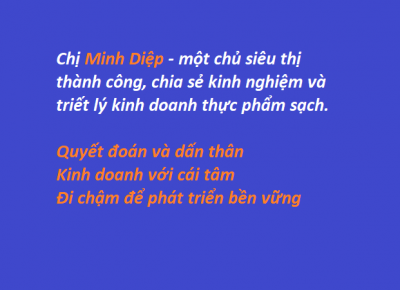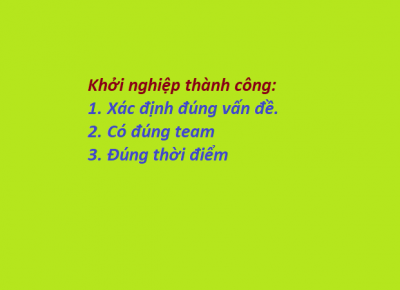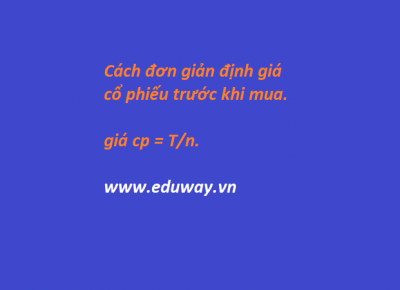Tin tức
What is Precision Writing?
Viết bởi: Dennis S. Bernstein, 05 04 2020
Precision writing is a style of written communication whose primary objective is to convey information. This style of writing is an appropriate mode of writing for technical communication, but can also be used in nontechnical situations.
Precision writing is distinct from fiction writing, where the main objective is story telling. In addition, precision writing is distinct from persuasive writing, which is appropriate for political, legal, and commercial objectives.
Precision writing is appropriate for documents that convey technical information, such as reports and articles. Instructions are also encompassed by precision writing, including directions (how to get to some place) and manuals (how to build, repair, or operate something).
In a nutshell, the key characteristics of precision writing are 1) clarity and 2) conciseness. To achieve clarity, fuzziness and ambiguity must be avoided. Conciseness refers to the minimal number of words needed to convey information without sacrificing clarity while providing fault tolerance as explained below.
How Can You Learn to Write Precisely?
With lots of practice. Here are some guidelines.
Audience and framework. All writing must take place with the audience in mind. Every audience requires that a framework be established so that your readers understand what you are talking about. You need to establish some background, assumptions, and terminology to set the stage for conveying information.
Signal-to-noise ratio. Every communication channel involves a signal and noise. The goodness of the channel is measured by the signal-to-noise ratio. Your objective in writing precisely is to optimize the signal-to-noise ratio by minimizing ambiguity and fuzziness.
Redundancy. Redundancy involves excess information that is included to decrease the possibility of miscommunication. Example: “Go 2.3 miles and turn left at the red house.”
Fault tolerance and diagnostics. Unlike a personal conversation, you cannot receive immediate feedback from the reader on what you have written. The next best thing is to include diagnostics in your writing. Example: “Go three blocks and turn left. You will see a white barn on the right. If you do not, then go back to step 3.”
Terminology. Choose good terminology and use it consistently. Choosing terminology means that you are giving names to things or ideas. These names must be easy to use, logical, and memorable. Poor or inconsistent terminology can be a significant barrier to precision communication.
Compression and expansion. Like a fluid, writing is compressible. You can be terse or long winded. Both extremes are bad. Sometimes you can compress ideas, while at other times more wordy or detailed expansion is needed.
Spatial precision. It can be challenging to use only words (that is, without images) to describe spatial ideas. Example: “Face the center of the east wall at a distance of 6 feet. Turn right, and go 10 feet. Look in the third box from the right. Inside you will find some gold.” Another example, “At the fourth stoplight, turn left. Go one block. You will see a 5-way intersection, which you enter at 6 o’clock and exit at 11 o’clock. Go 1 mile. My house is on the left.” Another example: “Face the center of the east wall. Viewing yourself from above, turn clockwise 45 degrees. You will now see the money on the table.”
Precision writing is distinct from fiction writing, where the main objective is story telling. In addition, precision writing is distinct from persuasive writing, which is appropriate for political, legal, and commercial objectives.
Precision writing is appropriate for documents that convey technical information, such as reports and articles. Instructions are also encompassed by precision writing, including directions (how to get to some place) and manuals (how to build, repair, or operate something).
In a nutshell, the key characteristics of precision writing are 1) clarity and 2) conciseness. To achieve clarity, fuzziness and ambiguity must be avoided. Conciseness refers to the minimal number of words needed to convey information without sacrificing clarity while providing fault tolerance as explained below.
How Can You Learn to Write Precisely?
With lots of practice. Here are some guidelines.
Audience and framework. All writing must take place with the audience in mind. Every audience requires that a framework be established so that your readers understand what you are talking about. You need to establish some background, assumptions, and terminology to set the stage for conveying information.
Signal-to-noise ratio. Every communication channel involves a signal and noise. The goodness of the channel is measured by the signal-to-noise ratio. Your objective in writing precisely is to optimize the signal-to-noise ratio by minimizing ambiguity and fuzziness.
Redundancy. Redundancy involves excess information that is included to decrease the possibility of miscommunication. Example: “Go 2.3 miles and turn left at the red house.”
Fault tolerance and diagnostics. Unlike a personal conversation, you cannot receive immediate feedback from the reader on what you have written. The next best thing is to include diagnostics in your writing. Example: “Go three blocks and turn left. You will see a white barn on the right. If you do not, then go back to step 3.”
Terminology. Choose good terminology and use it consistently. Choosing terminology means that you are giving names to things or ideas. These names must be easy to use, logical, and memorable. Poor or inconsistent terminology can be a significant barrier to precision communication.
Compression and expansion. Like a fluid, writing is compressible. You can be terse or long winded. Both extremes are bad. Sometimes you can compress ideas, while at other times more wordy or detailed expansion is needed.
Spatial precision. It can be challenging to use only words (that is, without images) to describe spatial ideas. Example: “Face the center of the east wall at a distance of 6 feet. Turn right, and go 10 feet. Look in the third box from the right. Inside you will find some gold.” Another example, “At the fourth stoplight, turn left. Go one block. You will see a 5-way intersection, which you enter at 6 o’clock and exit at 11 o’clock. Go 1 mile. My house is on the left.” Another example: “Face the center of the east wall. Viewing yourself from above, turn clockwise 45 degrees. You will now see the money on the table.”
Avoiding ambiguity. Example: Take the sine of the angle. That is, the trigonometric sine, not the algebraic sign.” Additional ambiguous words include right/right, current/current/current, sign/sine, amp/amp (current/amplifier), plane/airplane, and tangent/tangent. Pronouns are a scourge when it comes to ambiguity especially when it is not clear what “it” or “this” refer to.
Negative information. Negative information refers to what not to do, again a device for improving reliability of the information you are providing. Example: “Pour the red liquid into the beaker. Do not touch the flame.” Another example: “Go three miles. At the stop sign, turn left, that is, do not turn right.” Note that the words “that is” signify equivalence.
Binary information. Some information is of the yes/no type, whereas other information is a matter of degree. This distinction is digital (binary) versus analog. Example: “The toaster is on. When the toaster is on, the coils are hotter than boiling water.” Do not say “relative” or “advantage” without saying relative to what or advantage over what. Negative questions. Questions of this type are often confusing. I do not know how to answer the question: “You don’t want the money?”
Conciseness. Do not use many words when a few words suffice. Example: Change “The computer is able to make use of the software.” to “The computer can use the software.”
Summary
Establish frame of reference—so the reader knows what you’re talking about
Terminology--important things, one name, use consistently
No ambiguity—minimize confusion
Fault diagnosis—check for errors
Fault tolerance—in case errors occur
Conciseness—not wordier than necessary, but not excessively compact
Compression and expansion—when to be terse and when to be wordier for clarity
Spatial location, movement, and orientation—describe with precision
Source
http://www-personal.umich.edu/~dsbaero/tutorials/PrecisionWritingV8.pdf
Read more hereNegative information. Negative information refers to what not to do, again a device for improving reliability of the information you are providing. Example: “Pour the red liquid into the beaker. Do not touch the flame.” Another example: “Go three miles. At the stop sign, turn left, that is, do not turn right.” Note that the words “that is” signify equivalence.
Binary information. Some information is of the yes/no type, whereas other information is a matter of degree. This distinction is digital (binary) versus analog. Example: “The toaster is on. When the toaster is on, the coils are hotter than boiling water.” Do not say “relative” or “advantage” without saying relative to what or advantage over what. Negative questions. Questions of this type are often confusing. I do not know how to answer the question: “You don’t want the money?”
Conciseness. Do not use many words when a few words suffice. Example: Change “The computer is able to make use of the software.” to “The computer can use the software.”
Summary
Establish frame of reference—so the reader knows what you’re talking about
Terminology--important things, one name, use consistently
No ambiguity—minimize confusion
Fault diagnosis—check for errors
Fault tolerance—in case errors occur
Conciseness—not wordier than necessary, but not excessively compact
Compression and expansion—when to be terse and when to be wordier for clarity
Spatial location, movement, and orientation—describe with precision
Source
http://www-personal.umich.edu/~dsbaero/tutorials/PrecisionWritingV8.pdf
Có thể bạn quan tâm
11 06 2023 Xem thêm
Feynman wrote a letter to his former student explaining what problems worth solving: The worthwhile...
27 05 2023 Xem thêm
Doanh nghiệp cần các kỹ sư và nhà nghiên cứu giải quyết vấn đề của doanh nghiệp đó như tối ưu vận...
16 03 2023 Xem thêm
Cần phải xác định đúng vấn đề và tìm một team phù hợp.
04 01 2023 Xem thêm
Lấy tổng tài sản (đã trừ nợ, trừ thuế) chia cho tổng số cổ phiếu.









